-
FACTOR ANALYSIS
-
\r\n\r\n\r\nValue chain Analysis
-
\r\n\r\n\r\nPorter's
-
Five Forces Analysis
-
\r\n\r\n\r\nBargaining Power of Suppliers
-
\r\n\r\n\r\nBargaining
-
Power of Buyers
-
\r\n\r\n\r\nThreat of New Entrants
-
\r\n\r\n\r\nThreat
-
of Substitutes
-
\r\n\r\n\r\nIntensity of Rivalry
-
\r\n\r\n\r\n\r\n\r\nCOVID-19
-
Impact Analysis
-
\r\n\r\n\r\nMarket Impact Analysis
-
\r\n\r\n\r\nRegional
-
Impact
-
\r\n\r\n\r\nOpportunity and Threat Analysis
-
\r\n\r\n\r\n\r\n\r\n\r\n\r\n
-
\r\n
-
\r\n\r\n\r\nAnti-Counterfeit
-
Packaging Market, BY Technology (USD Billion)
-
\r\n\r\n\r\nHolography
-
\r\n\r\n\r\nRFID
-
\r\n\r\n\r\nBarcodes
-
\r\n\r\n\r\nDigital
-
Watermarking
-
\r\n\r\n\r\nInvisible Printing
-
\r\n\r\n\r\n\r\n\r\nAnti-Counterfeit
-
Packaging Market, BY Packaging Type (USD Billion)
-
\r\n\r\n\r\nLabels
-
\r\n\r\n\r\nTapes
-
\r\n\r\n\r\nShrink
-
Sleeves
-
\r\n\r\n\r\nBox
-
\r\n\r\n\r\nPouches
-
\r\n\r\n\r\n\r\n\r\nAnti-Counterfeit
-
Packaging Market, BY End Use Industry (USD Billion)
-
\r\n\r\n\r\nFood
-
and Beverages
-
\r\n\r\n\r\nPharmaceuticals
-
\r\n\r\n\r\nCosmetics
-
\r\n\r\n\r\nElectronics
-
\r\n\r\n\r\nAutomotive
-
\r\n\r\n\r\n\r\n\r\nAnti-Counterfeit
-
Packaging Market, BY Level of Security (USD Billion)
-
\r\n\r\n\r\nBasic
-
\r\n\r\n\r\nIntermediate
-
\r\n\r\n\r\nHigh
-
\r\n\r\n\r\n\r\n\r\nAnti-Counterfeit
-
Packaging Market, BY Regional (USD Billion)
-
\r\n\r\n\r\nNorth
-
America
-
\r\n\r\n\r\nUS
-
\r\n\r\n\r\nCanada
-
\r\n\r\n\r\n\r\n\r\nEurope
-
\r\n\r\n\r\nGermany
-
\r\n\r\n\r\nUK
-
\r\n\r\n\r\nFrance
-
\r\n\r\n\r\nRussia
-
\r\n\r\n\r\nItaly
-
\r\n\r\n\r\nSpain
-
\r\n\r\n\r\nRest
-
of Europe
-
\r\n\r\n\r\n\r\n\r\nAPAC
-
\r\n\r\n\r\nChina
-
\r\n\r\n\r\nIndia
-
\r\n\r\n\r\nJapan
-
\r\n\r\n\r\nSouth
-
Korea
-
\r\n\r\n\r\nMalaysia
-
\r\n\r\n\r\nThailand
-
\r\n\r\n\r\nIndonesia
-
\r\n\r\n\r\nRest
-
of APAC
-
\r\n\r\n\r\n\r\n\r\nSouth America
-
\r\n\r\n\r\nBrazil
-
\r\n\r\n\r\nMexico
-
\r\n\r\n\r\nArgentina
-
\r\n\r\n\r\nRest
-
of South America
-
\r\n\r\n\r\n\r\n\r\nMEA
-
\r\n\r\n\r\nGCC
-
Countries
-
\r\n\r\n\r\nSouth Africa
-
\r\n\r\n\r\nRest
-
of MEA
-
\r\n\r\n\r\n\r\n\r\n\r\n\r\n
-
\r\n
-
\r\n\r\n\r\nCompetitive
-
Landscape
-
\r\n\r\n\r\nOverview
-
\r\n\r\n\r\nCompetitive
-
Analysis
-
\r\n\r\n\r\nMarket share Analysis
-
\r\n\r\n\r\nMajor
-
Growth Strategy in the Anti-Counterfeit Packaging Market
-
\r\n\r\n\r\nCompetitive
-
Benchmarking
-
\r\n\r\n\r\nLeading Players in Terms of Number of Developments
-
in the Anti-Counterfeit Packaging Market
-
\r\n\r\n\r\nKey developments
-
and growth strategies
-
\r\n\r\n\r\nNew Product Launch/Service Deployment
-
\r\n\r\n\r\nMerger
-
& Acquisitions
-
\r\n\r\n\r\nJoint Ventures
-
\r\n\r\n\r\n\r\n\r\nMajor
-
Players Financial Matrix
-
\r\n\r\n\r\nSales and Operating Income
-
\r\n\r\n\r\nMajor
-
Players R&D Expenditure. 2023
-
\r\n\r\n\r\n\r\n\r\n\r\n\r\nCompany
-
Profiles
-
\r\n\r\n\r\nDuPont
-
\r\n\r\n\r\nFinancial
-
Overview
-
\r\n\r\n\r\nProducts Offered
-
\r\n\r\n\r\nKey
-
Developments
-
\r\n\r\n\r\nSWOT Analysis
-
\r\n\r\n\r\nKey
-
Strategies
-
\r\n\r\n\r\n\r\n\r\nXerox
-
\r\n\r\n\r\nFinancial
-
Overview
-
\r\n\r\n\r\nProducts Offered
-
\r\n\r\n\r\nKey
-
Developments
-
\r\n\r\n\r\nSWOT Analysis
-
\r\n\r\n\r\nKey
-
Strategies
-
\r\n\r\n\r\n\r\n\r\nNalco
-
\r\n\r\n\r\nFinancial
-
Overview
-
\r\n\r\n\r\nProducts Offered
-
\r\n\r\n\r\nKey
-
Developments
-
\r\n\r\n\r\nSWOT Analysis
-
\r\n\r\n\r\nKey
-
Strategies
-
\r\n\r\n\r\n\r\n\r\nAvery Dennison
-
\r\n\r\n\r\nFinancial
-
Overview
-
\r\n\r\n\r\nProducts Offered
-
\r\n\r\n\r\nKey
-
Developments
-
\r\n\r\n\r\nSWOT Analysis
-
\r\n\r\n\r\nKey
-
Strategies
-
\r\n\r\n\r\n\r\n\r\nMarkemImaje
-
\r\n\r\n\r\nFinancial
-
Overview
-
\r\n\r\n\r\nProducts Offered
-
\r\n\r\n\r\nKey
-
Developments
-
\r\n\r\n\r\nSWOT Analysis
-
\r\n\r\n\r\nKey
-
Strategies
-
\r\n\r\n\r\n\r\n\r\nAntalis
-
\r\n\r\n\r\nFinancial
-
Overview
-
\r\n\r\n\r\nProducts Offered
-
\r\n\r\n\r\nKey
-
Developments
-
\r\n\r\n\r\nSWOT Analysis
-
\r\n\r\n\r\nKey
-
Strategies
-
\r\n\r\n\r\n\r\n\r\nTesa
-
\r\n\r\n\r\nFinancial
-
Overview
-
\r\n\r\n\r\nProducts Offered
-
\r\n\r\n\r\nKey
-
Developments
-
\r\n\r\n\r\nSWOT Analysis
-
\r\n\r\n\r\nKey
-
Strategies
-
\r\n\r\n\r\n\r\n\r\nSealed Air
-
\r\n\r\n\r\nFinancial
-
Overview
-
\r\n\r\n\r\nProducts Offered
-
\r\n\r\n\r\nKey
-
Developments
-
\r\n\r\n\r\nSWOT Analysis
-
\r\n\r\n\r\nKey
-
Strategies
-
\r\n\r\n\r\n\r\n\r\nHuhtamaki
-
\r\n\r\n\r\nFinancial
-
Overview
-
\r\n\r\n\r\nProducts Offered
-
\r\n\r\n\r\nKey
-
Developments
-
\r\n\r\n\r\nSWOT Analysis
-
\r\n\r\n\r\nKey
-
Strategies
-
\r\n\r\n\r\n\r\n\r\nSappi
-
\r\n\r\n\r\nFinancial
-
Overview
-
\r\n\r\n\r\nProducts Offered
-
\r\n\r\n\r\nKey
-
Developments
-
\r\n\r\n\r\nSWOT Analysis
-
\r\n\r\n\r\nKey
-
Strategies
-
\r\n\r\n\r\n\r\n\r\nBASF
-
\r\n\r\n\r\nFinancial
-
Overview
-
\r\n\r\n\r\nProducts Offered
-
\r\n\r\n\r\nKey
-
Developments
-
\r\n\r\n\r\nSWOT Analysis
-
\r\n\r\n\r\nKey
-
Strategies
-
\r\n\r\n\r\n\r\n\r\nZebra Technologies
-
\r\n\r\n\r\nFinancial
-
Overview
-
\r\n\r\n\r\nProducts Offered
-
\r\n\r\n\r\nKey
-
Developments
-
\r\n\r\n\r\nSWOT Analysis
-
\r\n\r\n\r\nKey
-
Strategies
-
\r\n\r\n\r\n\r\n\r\nGlenroy
-
\r\n\r\n\r\nFinancial
-
Overview
-
\r\n\r\n\r\nProducts Offered
-
\r\n\r\n\r\nKey
-
Developments
-
\r\n\r\n\r\nSWOT Analysis
-
\r\n\r\n\r\nKey
-
Strategies
-
\r\n\r\n\r\n\r\n\r\n3M
-
\r\n\r\n\r\nFinancial
-
Overview
-
\r\n\r\n\r\nProducts Offered
-
\r\n\r\n\r\nKey
-
Developments
-
\r\n\r\n\r\nSWOT Analysis
-
\r\n\r\n\r\nKey
-
Strategies
-
\r\n\r\n\r\n\r\n\r\nVidhi Dyestuffs Manufacturing
-
Limited
-
\r\n\r\n\r\nFinancial Overview
-
\r\n\r\n\r\nProducts
-
Offered
-
\r\n\r\n\r\nKey Developments
-
\r\n\r\n\r\nSWOT
-
Analysis
-
\r\n\r\n\r\nKey Strategies
-
\r\n\r\n\r\n\r\n\r\n\r\n\r\nAppendix
-
\r\n\r\n\r\nReferences
-
\r\n\r\n\r\nRelated
-
Reports
-
\r\n\r\n\r\n\r\n\r\nLIST Of tables
-
\r\n
-
\r\n\r\n\r\nLIST
-
OF ASSUMPTIONS
-
\r\n\r\n\r\nNorth America Anti-Counterfeit Packaging
-
Market SIZE ESTIMATES & FORECAST, BY TECHNOLOGY, 2019-2035 (USD Billions)
-
\r\n\r\n\r\nNorth
-
America Anti-Counterfeit Packaging Market SIZE ESTIMATES & FORECAST, BY PACKAGING
-
TYPE, 2019-2035 (USD Billions)
-
\r\n\r\n\r\nNorth America Anti-Counterfeit
-
Packaging Market SIZE ESTIMATES & FORECAST, BY END USE INDUSTRY, 2019-2035 (USD
-
Billions)
-
\r\n\r\n\r\nNorth America Anti-Counterfeit Packaging Market
-
SIZE ESTIMATES & FORECAST, BY LEVEL OF SECURITY, 2019-2035 (USD Billions)
-
\r\n\r\n\r\nNorth
-
America Anti-Counterfeit Packaging Market SIZE ESTIMATES & FORECAST, BY REGIONAL,
-
\r\n\r\n\r\nUS Anti-Counterfeit Packaging
-
Market SIZE ESTIMATES & FORECAST, BY TECHNOLOGY, 2019-2035 (USD Billions)
-
\r\n\r\n\r\nUS
-
Anti-Counterfeit Packaging Market SIZE ESTIMATES & FORECAST, BY PACKAGING TYPE,
-
\r\n\r\n\r\nUS Anti-Counterfeit Packaging
-
Market SIZE ESTIMATES & FORECAST, BY END USE INDUSTRY, 2019-2035 (USD Billions)
-
\r\n\r\n\r\nUS
-
Anti-Counterfeit Packaging Market SIZE ESTIMATES & FORECAST, BY LEVEL OF SECURITY,
-
\r\n\r\n\r\nUS Anti-Counterfeit Packaging
-
Market SIZE ESTIMATES & FORECAST, BY REGIONAL, 2019-2035 (USD Billions)
-
\r\n\r\n\r\nCanada
-
Anti-Counterfeit Packaging Market SIZE ESTIMATES & FORECAST, BY TECHNOLOGY,
-
\r\n\r\n\r\nCanada Anti-Counterfeit Packaging
-
Market SIZE ESTIMATES & FORECAST, BY PACKAGING TYPE, 2019-2035 (USD Billions)
-
\r\n\r\n\r\nCanada
-
Anti-Counterfeit Packaging Market SIZE ESTIMATES & FORECAST, BY END USE INDUSTRY,
-
\r\n\r\n\r\nCanada Anti-Counterfeit Packaging
-
Market SIZE ESTIMATES & FORECAST, BY LEVEL OF SECURITY, 2019-2035 (USD Billions)
-
\r\n\r\n\r\nCanada
-
Anti-Counterfeit Packaging Market SIZE ESTIMATES & FORECAST, BY REGIONAL, 2019-2035
-
(USD Billions)
-
\r\n\r\n\r\nEurope Anti-Counterfeit Packaging Market
-
SIZE ESTIMATES & FORECAST, BY TECHNOLOGY, 2019-2035 (USD Billions)
-
\r\n\r\n\r\nEurope
-
Anti-Counterfeit Packaging Market SIZE ESTIMATES & FORECAST, BY PACKAGING TYPE,
-
\r\n\r\n\r\nEurope Anti-Counterfeit Packaging
-
Market SIZE ESTIMATES & FORECAST, BY END USE INDUSTRY, 2019-2035 (USD Billions)
-
\r\n\r\n\r\nEurope
-
Anti-Counterfeit Packaging Market SIZE ESTIMATES & FORECAST, BY LEVEL OF SECURITY,
-
\r\n\r\n\r\nEurope Anti-Counterfeit Packaging
-
Market SIZE ESTIMATES & FORECAST, BY REGIONAL, 2019-2035 (USD Billions)
-
\r\n\r\n\r\nGermany
-
Anti-Counterfeit Packaging Market SIZE ESTIMATES & FORECAST, BY TECHNOLOGY,
-
\r\n\r\n\r\nGermany Anti-Counterfeit Packaging
-
Market SIZE ESTIMATES & FORECAST, BY PACKAGING TYPE, 2019-2035 (USD Billions)
-
\r\n\r\n\r\nGermany
-
Anti-Counterfeit Packaging Market SIZE ESTIMATES & FORECAST, BY END USE INDUSTRY,
-
\r\n\r\n\r\nGermany Anti-Counterfeit Packaging
-
Market SIZE ESTIMATES & FORECAST, BY LEVEL OF SECURITY, 2019-2035 (USD Billions)
-
\r\n\r\n\r\nGermany
-
Anti-Counterfeit Packaging Market SIZE ESTIMATES & FORECAST, BY REGIONAL, 2019-2035
-
(USD Billions)
-
\r\n\r\n\r\nUK Anti-Counterfeit Packaging Market SIZE
-
ESTIMATES & FORECAST, BY TECHNOLOGY, 2019-2035 (USD Billions)
-
\r\n\r\n\r\nUK
-
Anti-Counterfeit Packaging Market SIZE ESTIMATES & FORECAST, BY PACKAGING TYPE,
-
\r\n\r\n\r\nUK Anti-Counterfeit Packaging
-
Market SIZE ESTIMATES & FORECAST, BY END USE INDUSTRY, 2019-2035 (USD Billions)
-
\r\n\r\n\r\nUK
-
Anti-Counterfeit Packaging Market SIZE ESTIMATES & FORECAST, BY LEVEL OF SECURITY,
-
\r\n\r\n\r\nUK Anti-Counterfeit Packaging
-
Market SIZE ESTIMATES & FORECAST, BY REGIONAL, 2019-2035 (USD Billions)
-
\r\n\r\n\r\nFrance
-
Anti-Counterfeit Packaging Market SIZE ESTIMATES & FORECAST, BY TECHNOLOGY,
-
\r\n\r\n\r\nFrance Anti-Counterfeit Packaging
-
Market SIZE ESTIMATES & FORECAST, BY PACKAGING TYPE, 2019-2035 (USD Billions)
-
\r\n\r\n\r\nFrance
-
Anti-Counterfeit Packaging Market SIZE ESTIMATES & FORECAST, BY END USE INDUSTRY,
-
\r\n\r\n\r\nFrance Anti-Counterfeit Packaging
-
Market SIZE ESTIMATES & FORECAST, BY LEVEL OF SECURITY, 2019-2035 (USD Billions)
-
\r\n\r\n\r\nFrance
-
Anti-Counterfeit Packaging Market SIZE ESTIMATES & FORECAST, BY REGIONAL, 2019-2035
-
(USD Billions)
-
\r\n\r\n\r\nRussia Anti-Counterfeit Packaging Market
-
SIZE ESTIMATES & FORECAST, BY TECHNOLOGY, 2019-2035 (USD Billions)
-
\r\n\r\n\r\nRussia
-
Anti-Counterfeit Packaging Market SIZE ESTIMATES & FORECAST, BY PACKAGING TYPE,
-
\r\n\r\n\r\nRussia Anti-Counterfeit Packaging
-
Market SIZE ESTIMATES & FORECAST, BY END USE INDUSTRY, 2019-2035 (USD Billions)
-
\r\n\r\n\r\nRussia
-
Anti-Counterfeit Packaging Market SIZE ESTIMATES & FORECAST, BY LEVEL OF SECURITY,
-
\r\n\r\n\r\nRussia Anti-Counterfeit Packaging
-
Market SIZE ESTIMATES & FORECAST, BY REGIONAL, 2019-2035 (USD Billions)
-
\r\n\r\n\r\nItaly
-
Anti-Counterfeit Packaging Market SIZE ESTIMATES & FORECAST, BY TECHNOLOGY,
-
\r\n\r\n\r\nItaly Anti-Counterfeit Packaging
-
Market SIZE ESTIMATES & FORECAST, BY PACKAGING TYPE, 2019-2035 (USD Billions)
-
\r\n\r\n\r\nItaly
-
Anti-Counterfeit Packaging Market SIZE ESTIMATES & FORECAST, BY END USE INDUSTRY,
-
\r\n\r\n\r\nItaly Anti-Counterfeit Packaging
-
Market SIZE ESTIMATES & FORECAST, BY LEVEL OF SECURITY, 2019-2035 (USD Billions)
-
\r\n\r\n\r\nItaly
-
Anti-Counterfeit Packaging Market SIZE ESTIMATES & FORECAST, BY REGIONAL, 2019-2035
-
(USD Billions)
-
\r\n\r\n\r\nSpain Anti-Counterfeit Packaging Market
-
SIZE ESTIMATES & FORECAST, BY TECHNOLOGY, 2019-2035 (USD Billions)
-
\r\n\r\n\r\nSpain
-
Anti-Counterfeit Packaging Market SIZE ESTIMATES & FORECAST, BY PACKAGING TYPE,
-
\r\n\r\n\r\nSpain Anti-Counterfeit Packaging
-
Market SIZE ESTIMATES & FORECAST, BY END USE INDUSTRY, 2019-2035 (USD Billions)
-
\r\n\r\n\r\nSpain
-
Anti-Counterfeit Packaging Market SIZE ESTIMATES & FORECAST, BY LEVEL OF SECURITY,
-
\r\n\r\n\r\nSpain Anti-Counterfeit Packaging
-
Market SIZE ESTIMATES & FORECAST, BY REGIONAL, 2019-2035 (USD Billions)
-
\r\n\r\n\r\nRest
-
of Europe Anti-Counterfeit Packaging Market SIZE ESTIMATES & FORECAST, BY TECHNOLOGY,
-
\r\n\r\n\r\nRest of Europe Anti-Counterfeit
-
Packaging Market SIZE ESTIMATES & FORECAST, BY PACKAGING TYPE, 2019-2035 (USD
-
Billions)
-
\r\n\r\n\r\nRest of Europe Anti-Counterfeit Packaging Market
-
SIZE ESTIMATES & FORECAST, BY END USE INDUSTRY, 2019-2035 (USD Billions)
-
\r\n\r\n\r\nRest
-
of Europe Anti-Counterfeit Packaging Market SIZE ESTIMATES & FORECAST, BY LEVEL
-
OF SECURITY, 2019-2035 (USD Billions)
-
\r\n\r\n\r\nRest of Europe
-
Anti-Counterfeit Packaging Market SIZE ESTIMATES & FORECAST, BY REGIONAL, 2019-2035
-
(USD Billions)
-
\r\n\r\n\r\nAPAC Anti-Counterfeit Packaging Market
-
SIZE ESTIMATES & FORECAST, BY TECHNOLOGY, 2019-2035 (USD Billions)
-
\r\n\r\n\r\nAPAC
-
Anti-Counterfeit Packaging Market SIZE ESTIMATES & FORECAST, BY PACKAGING TYPE,
-
\r\n\r\n\r\nAPAC Anti-Counterfeit Packaging
-
Market SIZE ESTIMATES & FORECAST, BY END USE INDUSTRY, 2019-2035 (USD Billions)
-
\r\n\r\n\r\nAPAC
-
Anti-Counterfeit Packaging Market SIZE ESTIMATES & FORECAST, BY LEVEL OF SECURITY,
-
\r\n\r\n\r\nAPAC Anti-Counterfeit Packaging
-
Market SIZE ESTIMATES & FORECAST, BY REGIONAL, 2019-2035 (USD Billions)
-
\r\n\r\n\r\nChina
-
Anti-Counterfeit Packaging Market SIZE ESTIMATES & FORECAST, BY TECHNOLOGY,
-
\r\n\r\n\r\nChina Anti-Counterfeit Packaging
-
Market SIZE ESTIMATES & FORECAST, BY PACKAGING TYPE, 2019-2035 (USD Billions)
-
\r\n\r\n\r\nChina
-
Anti-Counterfeit Packaging Market SIZE ESTIMATES & FORECAST, BY END USE INDUSTRY,
-
\r\n\r\n\r\nChina Anti-Counterfeit Packaging
-
Market SIZE ESTIMATES & FORECAST, BY LEVEL OF SECURITY, 2019-2035 (USD Billions)
-
\r\n\r\n\r\nChina
-
Anti-Counterfeit Packaging Market SIZE ESTIMATES & FORECAST, BY REGIONAL, 2019-2035
-
(USD Billions)
-
\r\n\r\n\r\nIndia Anti-Counterfeit Packaging Market
-
SIZE ESTIMATES & FORECAST, BY TECHNOLOGY, 2019-2035 (USD Billions)
-
\r\n\r\n\r\nIndia
-
Anti-Counterfeit Packaging Market SIZE ESTIMATES & FORECAST, BY PACKAGING TYPE,
-
\r\n\r\n\r\nIndia Anti-Counterfeit Packaging
-
Market SIZE ESTIMATES & FORECAST, BY END USE INDUSTRY, 2019-2035 (USD Billions)
-
\r\n\r\n\r\nIndia
-
Anti-Counterfeit Packaging Market SIZE ESTIMATES & FORECAST, BY LEVEL OF SECURITY,
-
\r\n\r\n\r\nIndia Anti-Counterfeit Packaging
-
Market SIZE ESTIMATES & FORECAST, BY REGIONAL, 2019-2035 (USD Billions)
-
\r\n\r\n\r\nJapan
-
Anti-Counterfeit Packaging Market SIZE ESTIMATES & FORECAST, BY TECHNOLOGY,
-
\r\n\r\n\r\nJapan Anti-Counterfeit Packaging
-
Market SIZE ESTIMATES & FORECAST, BY PACKAGING TYPE, 2019-2035 (USD Billions)
-
\r\n\r\n\r\nJapan
-
Anti-Counterfeit Packaging Market SIZE ESTIMATES & FORECAST, BY END USE INDUSTRY,
-
\r\n\r\n\r\nJapan Anti-Counterfeit Packaging
-
Market SIZE ESTIMATES & FORECAST, BY LEVEL OF SECURITY, 2019-2035 (USD Billions)
-
\r\n\r\n\r\nJapan
-
Anti-Counterfeit Packaging Market SIZE ESTIMATES & FORECAST, BY REGIONAL, 2019-2035
-
(USD Billions)
-
\r\n\r\n\r\nSouth Korea Anti-Counterfeit Packaging
-
Market SIZE ESTIMATES & FORECAST, BY TECHNOLOGY, 2019-2035 (USD Billions)
-
\r\n\r\n\r\nSouth
-
Korea Anti-Counterfeit Packaging Market SIZE ESTIMATES & FORECAST, BY PACKAGING
-
TYPE, 2019-2035 (USD Billions)
-
\r\n\r\n\r\nSouth Korea Anti-Counterfeit
-
Packaging Market SIZE ESTIMATES & FORECAST, BY END USE INDUSTRY, 2019-2035 (USD
-
Billions)
-
\r\n\r\n\r\nSouth Korea Anti-Counterfeit Packaging Market
-
SIZE ESTIMATES & FORECAST, BY LEVEL OF SECURITY, 2019-2035 (USD Billions)
-
\r\n\r\n\r\nSouth
-
Korea Anti-Counterfeit Packaging Market SIZE ESTIMATES & FORECAST, BY REGIONAL,
-
\r\n\r\n\r\nMalaysia Anti-Counterfeit Packaging
-
Market SIZE ESTIMATES & FORECAST, BY TECHNOLOGY, 2019-2035 (USD Billions)
-
\r\n\r\n\r\nMalaysia
-
Anti-Counterfeit Packaging Market SIZE ESTIMATES & FORECAST, BY PACKAGING TYPE,
-
\r\n\r\n\r\nMalaysia Anti-Counterfeit Packaging
-
Market SIZE ESTIMATES & FORECAST, BY END USE INDUSTRY, 2019-2035 (USD Billions)
-
\r\n\r\n\r\nMalaysia
-
Anti-Counterfeit Packaging Market SIZE ESTIMATES & FORECAST, BY LEVEL OF SECURITY,
-
\r\n\r\n\r\nMalaysia Anti-Counterfeit Packaging
-
Market SIZE ESTIMATES & FORECAST, BY REGIONAL, 2019-2035 (USD Billions)
-
\r\n\r\n\r\nThailand
-
Anti-Counterfeit Packaging Market SIZE ESTIMATES & FORECAST, BY TECHNOLOGY,
-
\r\n\r\n\r\nThailand Anti-Counterfeit Packaging
-
Market SIZE ESTIMATES & FORECAST, BY PACKAGING TYPE, 2019-2035 (USD Billions)
-
\r\n\r\n\r\nThailand
-
Anti-Counterfeit Packaging Market SIZE ESTIMATES & FORECAST, BY END USE INDUSTRY,
-
\r\n\r\n\r\nThailand Anti-Counterfeit Packaging
-
Market SIZE ESTIMATES & FORECAST, BY LEVEL OF SECURITY, 2019-2035 (USD Billions)
-
\r\n\r\n\r\nThailand
-
Anti-Counterfeit Packaging Market SIZE ESTIMATES & FORECAST, BY REGIONAL, 2019-2035
-
(USD Billions)
-
\r\n\r\n\r\nIndonesia Anti-Counterfeit Packaging Market
-
SIZE ESTIMATES & FORECAST, BY TECHNOLOGY, 2019-2035 (USD Billions)
-
\r\n\r\n\r\nIndonesia
-
Anti-Counterfeit Packaging Market SIZE ESTIMATES & FORECAST, BY PACKAGING TYPE,
-
\r\n\r\n\r\nIndonesia Anti-Counterfeit Packaging
-
Market SIZE ESTIMATES & FORECAST, BY END USE INDUSTRY, 2019-2035 (USD Billions)
-
\r\n\r\n\r\nIndonesia
-
Anti-Counterfeit Packaging Market SIZE ESTIMATES & FORECAST, BY LEVEL OF SECURITY,
-
\r\n\r\n\r\nIndonesia Anti-Counterfeit Packaging
-
Market SIZE ESTIMATES & FORECAST, BY REGIONAL, 2019-2035 (USD Billions)
-
\r\n\r\n\r\nRest
-
of APAC Anti-Counterfeit Packaging Market SIZE ESTIMATES & FORECAST, BY TECHNOLOGY,
-
\r\n\r\n\r\nRest of APAC Anti-Counterfeit
-
Packaging Market SIZE ESTIMATES & FORECAST, BY PACKAGING TYPE, 2019-2035 (USD
-
Billions)
-
\r\n\r\n\r\nRest of APAC Anti-Counterfeit Packaging Market
-
SIZE ESTIMATES & FORECAST, BY END USE INDUSTRY, 2019-2035 (USD Billions)
-
\r\n\r\n\r\nRest
-
of APAC Anti-Counterfeit Packaging Market SIZE ESTIMATES & FORECAST, BY LEVEL
-
OF SECURITY, 2019-2035 (USD Billions)
-
\r\n\r\n\r\nRest of APAC Anti-Counterfeit
-
Packaging Market SIZE ESTIMATES & FORECAST, BY REGIONAL, 2019-2035 (USD Billions)
-
\r\n\r\n\r\nSouth
-
America Anti-Counterfeit Packaging Market SIZE ESTIMATES & FORECAST, BY TECHNOLOGY,
-
\r\n\r\n\r\nSouth America Anti-Counterfeit
-
Packaging Market SIZE ESTIMATES & FORECAST, BY PACKAGING TYPE, 2019-2035 (USD
-
Billions)
-
\r\n\r\n\r\nSouth America Anti-Counterfeit Packaging Market
-
SIZE ESTIMATES & FORECAST, BY END USE INDUSTRY, 2019-2035 (USD Billions)
-
\r\n\r\n\r\nSouth
-
America Anti-Counterfeit Packaging Market SIZE ESTIMATES & FORECAST, BY LEVEL
-
OF SECURITY, 2019-2035 (USD Billions)
-
\r\n\r\n\r\nSouth America Anti-Counterfeit
-
Packaging Market SIZE ESTIMATES & FORECAST, BY REGIONAL, 2019-2035 (USD Billions)
-
\r\n\r\n\r\nBrazil
-
Anti-Counterfeit Packaging Market SIZE ESTIMATES & FORECAST, BY TECHNOLOGY,
-
\r\n\r\n\r\nBrazil Anti-Counterfeit Packaging
-
Market SIZE ESTIMATES & FORECAST, BY PACKAGING TYPE, 2019-2035 (USD Billions)
-
\r\n\r\n\r\nBrazil
-
Anti-Counterfeit Packaging Market SIZE ESTIMATES & FORECAST, BY END USE INDUSTRY,
-
\r\n\r\n\r\nBrazil Anti-Counterfeit Packaging
-
Market SIZE ESTIMATES & FORECAST, BY LEVEL OF SECURITY, 2019-2035 (USD Billions)
-
\r\n\r\n\r\nBrazil
-
Anti-Counterfeit Packaging Market SIZE ESTIMATES & FORECAST, BY REGIONAL, 2019-2035
-
(USD Billions)
-
\r\n\r\n\r\nMexico Anti-Counterfeit Packaging Market
-
SIZE ESTIMATES & FORECAST, BY TECHNOLOGY, 2019-2035 (USD Billions)
-
\r\n\r\n\r\nMexico
-
Anti-Counterfeit Packaging Market SIZE ESTIMATES & FORECAST, BY PACKAGING TYPE,
-
\r\n\r\n\r\nMexico Anti-Counterfeit Packaging
-
Market SIZE ESTIMATES & FORECAST, BY END USE INDUSTRY, 2019-2035 (USD Billions)
-
\r\n\r\n\r\nMexico
-
Anti-Counterfeit Packaging Market SIZE ESTIMATES & FORECAST, BY LEVEL OF SECURITY,
-
\r\n\r\n\r\nMexico Anti-Counterfeit Packaging
-
Market SIZE ESTIMATES & FORECAST, BY REGIONAL, 2019-2035 (USD Billions)
-
\r\n\r\n\r\nArgentina
-
Anti-Counterfeit Packaging Market SIZE ESTIMATES & FORECAST, BY TECHNOLOGY,
-
\r\n\r\n\r\nArgentina Anti-Counterfeit Packaging
-
Market SIZE ESTIMATES & FORECAST, BY PACKAGING TYPE, 2019-2035 (USD Billions)
-
\r\n\r\n\r\nArgentina
-
Anti-Counterfeit Packaging Market SIZE ESTIMATES & FORECAST, BY END USE INDUSTRY,
-
\r\n\r\n\r\nArgentina Anti-Counterfeit Packaging
-
Market SIZE ESTIMATES & FORECAST, BY LEVEL OF SECURITY, 2019-2035 (USD Billions)
-
\r\n\r\n\r\nArgentina
-
Anti-Counterfeit Packaging Market SIZE ESTIMATES & FORECAST, BY REGIONAL, 2019-2035
-
(USD Billions)
-
\r\n\r\n\r\nRest of South America Anti-Counterfeit
-
Packaging Market SIZE ESTIMATES & FORECAST, BY TECHNOLOGY, 2019-2035 (USD Billions)
-
\r\n\r\n\r\nRest
-
of South America Anti-Counterfeit Packaging Market SIZE ESTIMATES & FORECAST,
-
BY PACKAGING TYPE, 2019-2035 (USD Billions)
-
\r\n\r\n\r\nRest of South
-
America Anti-Counterfeit Packaging Market SIZE ESTIMATES & FORECAST, BY END
-
USE INDUSTRY, 2019-2035 (USD Billions)
-
\r\n\r\n\r\nRest of South
-
America Anti-Counterfeit Packaging Market SIZE ESTIMATES & FORECAST, BY LEVEL
-
OF SECURITY, 2019-2035 (USD Billions)
-
\r\n\r\n\r\nRest of South America
-
Anti-Counterfeit Packaging Market SIZE ESTIMATES & FORECAST, BY REGIONAL, 2019-2035
-
(USD Billions)
-
\r\n\r\n\r\nMEA Anti-Counterfeit Packaging Market
-
SIZE ESTIMATES & FORECAST, BY TECHNOLOGY, 2019-2035 (USD Billions)
-
\r\n\r\n\r\nMEA
-
Anti-Counterfeit Packaging Market SIZE ESTIMATES & FORECAST, BY PACKAGING TYPE,
-
\r\n\r\n\r\nMEA Anti-Counterfeit Packaging
-
Market SIZE ESTIMATES & FORECAST, BY END USE INDUSTRY, 2019-2035 (USD Billions)
-
\r\n\r\n\r\nMEA
-
Anti-Counterfeit Packaging Market SIZE ESTIMATES & FORECAST, BY LEVEL OF SECURITY,
-
\r\n\r\n\r\nMEA Anti-Counterfeit Packaging
-
Market SIZE ESTIMATES & FORECAST, BY REGIONAL, 2019-2035 (USD Billions)
-
\r\n\r\n\r\nGCC
-
Countries Anti-Counterfeit Packaging Market SIZE ESTIMATES & FORECAST, BY TECHNOLOGY,
-
\r\n\r\n\r\nGCC Countries Anti-Counterfeit
-
Packaging Market SIZE ESTIMATES & FORECAST, BY PACKAGING TYPE, 2019-2035 (USD
-
Billions)
-
\r\n\r\n\r\nGCC Countries Anti-Counterfeit Packaging Market
-
SIZE ESTIMATES & FORECAST, BY END USE INDUSTRY, 2019-2035 (USD Billions)
-
\r\n\r\n\r\nGCC
-
Countries Anti-Counterfeit Packaging Market SIZE ESTIMATES & FORECAST, BY LEVEL
-
OF SECURITY, 2019-2035 (USD Billions)
-
\r\n\r\n\r\nGCC Countries Anti-Counterfeit
-
Packaging Market SIZE ESTIMATES & FORECAST, BY REGIONAL, 2019-2035 (USD Billions)
-
\r\n\r\n\r\nSouth
-
Africa Anti-Counterfeit Packaging Market SIZE ESTIMATES & FORECAST, BY TECHNOLOGY,
-
\r\n\r\n\r\nSouth Africa Anti-Counterfeit
-
Packaging Market SIZE ESTIMATES & FORECAST, BY PACKAGING TYPE, 2019-2035 (USD
-
Billions)
-
\r\n\r\n\r\nSouth Africa Anti-Counterfeit Packaging Market
-
SIZE ESTIMATES & FORECAST, BY END USE INDUSTRY, 2019-2035 (USD Billions)
-
\r\n\r\n\r\nSouth
-
Africa Anti-Counterfeit Packaging Market SIZE ESTIMATES & FORECAST, BY LEVEL
-
OF SECURITY, 2019-2035 (USD Billions)
-
\r\n\r\n\r\nSouth Africa Anti-Counterfeit
-
Packaging Market SIZE ESTIMATES & FORECAST, BY REGIONAL, 2019-2035 (USD Billions)
-
\r\n\r\n\r\nRest
-
of MEA Anti-Counterfeit Packaging Market SIZE ESTIMATES & FORECAST, BY TECHNOLOGY,
-
\r\n\r\n\r\nRest of MEA Anti-Counterfeit
-
Packaging Market SIZE ESTIMATES & FORECAST, BY PACKAGING TYPE, 2019-2035 (USD
-
Billions)
-
\r\n\r\n\r\nRest of MEA Anti-Counterfeit Packaging Market
-
SIZE ESTIMATES & FORECAST, BY END USE INDUSTRY, 2019-2035 (USD Billions)
-
\r\n\r\n\r\nRest
-
of MEA Anti-Counterfeit Packaging Market SIZE ESTIMATES & FORECAST, BY LEVEL
-
OF SECURITY, 2019-2035 (USD Billions)
-
\r\n\r\n\r\nRest of MEA Anti-Counterfeit
-
Packaging Market SIZE ESTIMATES & FORECAST, BY REGIONAL, 2019-2035 (USD Billions)
-
\r\n\r\n\r\nPRODUCT
-
LAUNCH/PRODUCT DEVELOPMENT/APPROVAL
-
\r\n\r\n\r\nACQUISITION/PARTNERSHIP
-
\r\n\r\n\r\n
-
\r\n
-
\r\n
-
\r\n
-
\r\n
-
\r\n
-
\r\n
-
\r\n
-
\r\n
-
\r\n
-
\r\n
-
\r\n
-
\r\n
-
\r\n
-
\r\n
-
\r\n
-
\r\n
-
\r\n
-
\r\n
-
\r\n
-
\r\n
-
\r\n
-
\r\n
-
\r\n
-
\r\n
-
\r\n
-
\r\n
-
\r\n
-
\r\n
-
\r\nLIST
-
Of figures
-
\r\n
-
\r\n\r\n\r\nMARKET SYNOPSIS
-
\r\n\r\n\r\nNORTH
-
AMERICA ANTI-COUNTERFEIT PACKAGING MARKET ANALYSIS
-
\r\n\r\n\r\nUS
-
ANTI-COUNTERFEIT PACKAGING MARKET ANALYSIS BY TECHNOLOGY
-
\r\n\r\n\r\nUS
-
ANTI-COUNTERFEIT PACKAGING MARKET ANALYSIS BY PACKAGING TYPE
-
\r\n\r\n\r\nUS
-
ANTI-COUNTERFEIT PACKAGING MARKET ANALYSIS BY END USE INDUSTRY
-
\r\n\r\n\r\nUS
-
ANTI-COUNTERFEIT PACKAGING MARKET ANALYSIS BY LEVEL OF SECURITY
-
\r\n\r\n\r\nUS
-
ANTI-COUNTERFEIT PACKAGING MARKET ANALYSIS BY REGIONAL
-
\r\n\r\n\r\nCANADA
-
ANTI-COUNTERFEIT PACKAGING MARKET ANALYSIS BY TECHNOLOGY
-
\r\n\r\n\r\nCANADA
-
ANTI-COUNTERFEIT PACKAGING MARKET ANALYSIS BY PACKAGING TYPE
-
\r\n\r\n\r\nCANADA
-
ANTI-COUNTERFEIT PACKAGING MARKET ANALYSIS BY END USE INDUSTRY
-
\r\n\r\n\r\nCANADA
-
ANTI-COUNTERFEIT PACKAGING MARKET ANALYSIS BY LEVEL OF SECURITY
-
\r\n\r\n\r\nCANADA
-
ANTI-COUNTERFEIT PACKAGING MARKET ANALYSIS BY REGIONAL
-
\r\n\r\n\r\nEUROPE
-
ANTI-COUNTERFEIT PACKAGING MARKET ANALYSIS
-
\r\n\r\n\r\nGERMANY ANTI-COUNTERFEIT
-
PACKAGING MARKET ANALYSIS BY TECHNOLOGY
-
\r\n\r\n\r\nGERMANY ANTI-COUNTERFEIT
-
PACKAGING MARKET ANALYSIS BY PACKAGING TYPE
-
\r\n\r\n\r\nGERMANY ANTI-COUNTERFEIT
-
PACKAGING MARKET ANALYSIS BY END USE INDUSTRY
-
\r\n\r\n\r\nGERMANY
-
ANTI-COUNTERFEIT PACKAGING MARKET ANALYSIS BY LEVEL OF SECURITY
-
\r\n\r\n\r\nGERMANY
-
ANTI-COUNTERFEIT PACKAGING MARKET ANALYSIS BY REGIONAL
-
\r\n\r\n\r\nUK
-
ANTI-COUNTERFEIT PACKAGING MARKET ANALYSIS BY TECHNOLOGY
-
\r\n\r\n\r\nUK
-
ANTI-COUNTERFEIT PACKAGING MARKET ANALYSIS BY PACKAGING TYPE
-
\r\n\r\n\r\nUK
-
ANTI-COUNTERFEIT PACKAGING MARKET ANALYSIS BY END USE INDUSTRY
-
\r\n\r\n\r\nUK
-
ANTI-COUNTERFEIT PACKAGING MARKET ANALYSIS BY LEVEL OF SECURITY
-
\r\n\r\n\r\nUK
-
ANTI-COUNTERFEIT PACKAGING MARKET ANALYSIS BY REGIONAL
-
\r\n\r\n\r\nFRANCE
-
ANTI-COUNTERFEIT PACKAGING MARKET ANALYSIS BY TECHNOLOGY
-
\r\n\r\n\r\nFRANCE
-
ANTI-COUNTERFEIT PACKAGING MARKET ANALYSIS BY PACKAGING TYPE
-
\r\n\r\n\r\nFRANCE
-
ANTI-COUNTERFEIT PACKAGING MARKET ANALYSIS BY END USE INDUSTRY
-
\r\n\r\n\r\nFRANCE
-
ANTI-COUNTERFEIT PACKAGING MARKET ANALYSIS BY LEVEL OF SECURITY
-
\r\n\r\n\r\nFRANCE
-
ANTI-COUNTERFEIT PACKAGING MARKET ANALYSIS BY REGIONAL
-
\r\n\r\n\r\nRUSSIA
-
ANTI-COUNTERFEIT PACKAGING MARKET ANALYSIS BY TECHNOLOGY
-
\r\n\r\n\r\nRUSSIA
-
ANTI-COUNTERFEIT PACKAGING MARKET ANALYSIS BY PACKAGING TYPE
-
\r\n\r\n\r\nRUSSIA
-
ANTI-COUNTERFEIT PACKAGING MARKET ANALYSIS BY END USE INDUSTRY
-
\r\n\r\n\r\nRUSSIA
-
ANTI-COUNTERFEIT PACKAGING MARKET ANALYSIS BY LEVEL OF SECURITY
-
\r\n\r\n\r\nRUSSIA
-
ANTI-COUNTERFEIT PACKAGING MARKET ANALYSIS BY REGIONAL
-
\r\n\r\n\r\nITALY
-
ANTI-COUNTERFEIT PACKAGING MARKET ANALYSIS BY TECHNOLOGY
-
\r\n\r\n\r\nITALY
-
ANTI-COUNTERFEIT PACKAGING MARKET ANALYSIS BY PACKAGING TYPE
-
\r\n\r\n\r\nITALY
-
ANTI-COUNTERFEIT PACKAGING MARKET ANALYSIS BY END USE INDUSTRY
-
\r\n\r\n\r\nITALY
-
ANTI-COUNTERFEIT PACKAGING MARKET ANALYSIS BY LEVEL OF SECURITY
-
\r\n\r\n\r\nITALY
-
ANTI-COUNTERFEIT PACKAGING MARKET ANALYSIS BY REGIONAL
-
\r\n\r\n\r\nSPAIN
-
ANTI-COUNTERFEIT PACKAGING MARKET ANALYSIS BY TECHNOLOGY
-
\r\n\r\n\r\nSPAIN
-
ANTI-COUNTERFEIT PACKAGING MARKET ANALYSIS BY PACKAGING TYPE
-
\r\n\r\n\r\nSPAIN
-
ANTI-COUNTERFEIT PACKAGING MARKET ANALYSIS BY END USE INDUSTRY
-
\r\n\r\n\r\nSPAIN
-
ANTI-COUNTERFEIT PACKAGING MARKET ANALYSIS BY LEVEL OF SECURITY
-
\r\n\r\n\r\nSPAIN
-
ANTI-COUNTERFEIT PACKAGING MARKET ANALYSIS BY REGIONAL
-
\r\n\r\n\r\nREST
-
OF EUROPE ANTI-COUNTERFEIT PACKAGING MARKET ANALYSIS BY TECHNOLOGY
-
\r\n\r\n\r\nREST
-
OF EUROPE ANTI-COUNTERFEIT PACKAGING MARKET ANALYSIS BY PACKAGING TYPE
-
\r\n\r\n\r\nREST
-
OF EUROPE ANTI-COUNTERFEIT PACKAGING MARKET ANALYSIS BY END USE INDUSTRY
-
\r\n\r\n\r\nREST
-
OF EUROPE ANTI-COUNTERFEIT PACKAGING MARKET ANALYSIS BY LEVEL OF SECURITY
-
\r\n\r\n\r\nREST
-
OF EUROPE ANTI-COUNTERFEIT PACKAGING MARKET ANALYSIS BY REGIONAL
-
\r\n\r\n\r\nAPAC
-
ANTI-COUNTERFEIT PACKAGING MARKET ANALYSIS
-
\r\n\r\n\r\nCHINA ANTI-COUNTERFEIT
-
PACKAGING MARKET ANALYSIS BY TECHNOLOGY
-
\r\n\r\n\r\nCHINA ANTI-COUNTERFEIT
-
PACKAGING MARKET ANALYSIS BY PACKAGING TYPE
-
\r\n\r\n\r\nCHINA ANTI-COUNTERFEIT
-
PACKAGING MARKET ANALYSIS BY END USE INDUSTRY
-
\r\n\r\n\r\nCHINA ANTI-COUNTERFEIT
-
PACKAGING MARKET ANALYSIS BY LEVEL OF SECURITY
-
\r\n\r\n\r\nCHINA
-
ANTI-COUNTERFEIT PACKAGING MARKET ANALYSIS BY REGIONAL
-
\r\n\r\n\r\nINDIA
-
ANTI-COUNTERFEIT PACKAGING MARKET ANALYSIS BY TECHNOLOGY
-
\r\n\r\n\r\nINDIA
-
ANTI-COUNTERFEIT PACKAGING MARKET ANALYSIS BY PACKAGING TYPE
-
\r\n\r\n\r\nINDIA
-
ANTI-COUNTERFEIT PACKAGING MARKET ANALYSIS BY END USE INDUSTRY
-
\r\n\r\n\r\nINDIA
-
ANTI-COUNTERFEIT PACKAGING MARKET ANALYSIS BY LEVEL OF SECURITY
-
\r\n\r\n\r\nINDIA
-
ANTI-COUNTERFEIT PACKAGING MARKET ANALYSIS BY REGIONAL
-
\r\n\r\n\r\nJAPAN
-
ANTI-COUNTERFEIT PACKAGING MARKET ANALYSIS BY TECHNOLOGY
-
\r\n\r\n\r\nJAPAN
-
ANTI-COUNTERFEIT PACKAGING MARKET ANALYSIS BY PACKAGING TYPE
-
\r\n\r\n\r\nJAPAN
-
ANTI-COUNTERFEIT PACKAGING MARKET ANALYSIS BY END USE INDUSTRY
-
\r\n\r\n\r\nJAPAN
-
ANTI-COUNTERFEIT PACKAGING MARKET ANALYSIS BY LEVEL OF SECURITY
-
\r\n\r\n\r\nJAPAN
-
ANTI-COUNTERFEIT PACKAGING MARKET ANALYSIS BY REGIONAL
-
\r\n\r\n\r\nSOUTH
-
KOREA ANTI-COUNTERFEIT PACKAGING MARKET ANALYSIS BY TECHNOLOGY
-
\r\n\r\n\r\nSOUTH
-
KOREA ANTI-COUNTERFEIT PACKAGING MARKET ANALYSIS BY PACKAGING TYPE
-
\r\n\r\n\r\nSOUTH
-
KOREA ANTI-COUNTERFEIT PACKAGING MARKET ANALYSIS BY END USE INDUSTRY
-
\r\n\r\n\r\nSOUTH
-
KOREA ANTI-COUNTERFEIT PACKAGING MARKET ANALYSIS BY LEVEL OF SECURITY
-
\r\n\r\n\r\nSOUTH
-
KOREA ANTI-COUNTERFEIT PACKAGING MARKET ANALYSIS BY REGIONAL
-
\r\n\r\n\r\nMALAYSIA
-
ANTI-COUNTERFEIT PACKAGING MARKET ANALYSIS BY TECHNOLOGY
-
\r\n\r\n\r\nMALAYSIA
-
ANTI-COUNTERFEIT PACKAGING MARKET ANALYSIS BY PACKAGING TYPE
-
\r\n\r\n\r\nMALAYSIA
-
ANTI-COUNTERFEIT PACKAGING MARKET ANALYSIS BY END USE INDUSTRY
-
\r\n\r\n\r\nMALAYSIA
-
ANTI-COUNTERFEIT PACKAGING MARKET ANALYSIS BY LEVEL OF SECURITY
-
\r\n\r\n\r\nMALAYSIA
-
ANTI-COUNTERFEIT PACKAGING MARKET ANALYSIS BY REGIONAL
-
\r\n\r\n\r\nTHAILAND
-
ANTI-COUNTERFEIT PACKAGING MARKET ANALYSIS BY TECHNOLOGY
-
\r\n\r\n\r\nTHAILAND
-
ANTI-COUNTERFEIT PACKAGING MARKET ANALYSIS BY PACKAGING TYPE
-
\r\n\r\n\r\nTHAILAND
-
ANTI-COUNTERFEIT PACKAGING MARKET ANALYSIS BY END USE INDUSTRY
-
\r\n\r\n\r\nTHAILAND
-
ANTI-COUNTERFEIT PACKAGING MARKET ANALYSIS BY LEVEL OF SECURITY
-
\r\n\r\n\r\nTHAILAND
-
ANTI-COUNTERFEIT PACKAGING MARKET ANALYSIS BY REGIONAL
-
\r\n\r\n\r\nINDONESIA
-
ANTI-COUNTERFEIT PACKAGING MARKET ANALYSIS BY TECHNOLOGY
-
\r\n\r\n\r\nINDONESIA
-
ANTI-COUNTERFEIT PACKAGING MARKET ANALYSIS BY PACKAGING TYPE
-
\r\n\r\n\r\nINDONESIA
-
ANTI-COUNTERFEIT PACKAGING MARKET ANALYSIS BY END USE INDUSTRY
-
\r\n\r\n\r\nINDONESIA
-
ANTI-COUNTERFEIT PACKAGING MARKET ANALYSIS BY LEVEL OF SECURITY
-
\r\n\r\n\r\nINDONESIA
-
ANTI-COUNTERFEIT PACKAGING MARKET ANALYSIS BY REGIONAL
-
\r\n\r\n\r\nREST
-
OF APAC ANTI-COUNTERFEIT PACKAGING MARKET ANALYSIS BY TECHNOLOGY
-
\r\n\r\n\r\nREST
-
OF APAC ANTI-COUNTERFEIT PACKAGING MARKET ANALYSIS BY PACKAGING TYPE
-
\r\n\r\n\r\nREST
-
OF APAC ANTI-COUNTERFEIT PACKAGING MARKET ANALYSIS BY END USE INDUSTRY
-
\r\n\r\n\r\nREST
-
OF APAC ANTI-COUNTERFEIT PACKAGING MARKET ANALYSIS BY LEVEL OF SECURITY
-
\r\n\r\n\r\nREST
-
OF APAC ANTI-COUNTERFEIT PACKAGING MARKET ANALYSIS BY REGIONAL
-
\r\n\r\n\r\nSOUTH
-
AMERICA ANTI-COUNTERFEIT PACKAGING MARKET ANALYSIS
-
\r\n\r\n\r\nBRAZIL
-
ANTI-COUNTERFEIT PACKAGING MARKET ANALYSIS BY TECHNOLOGY
-
\r\n\r\n\r\nBRAZIL
-
ANTI-COUNTERFEIT PACKAGING MARKET ANALYSIS BY PACKAGING TYPE
-
\r\n\r\n\r\nBRAZIL
-
ANTI-COUNTERFEIT PACKAGING MARKET ANALYSIS BY END USE INDUSTRY
-
\r\n\r\n\r\nBRAZIL
-
ANTI-COUNTERFEIT PACKAGING MARKET ANALYSIS BY LEVEL OF SECURITY
-
\r\n\r\n\r\nBRAZIL
-
ANTI-COUNTERFEIT PACKAGING MARKET ANALYSIS BY REGIONAL
-
\r\n\r\n\r\nMEXICO
-
ANTI-COUNTERFEIT PACKAGING MARKET ANALYSIS BY TECHNOLOGY
-
\r\n\r\n\r\nMEXICO
-
ANTI-COUNTERFEIT PACKAGING MARKET ANALYSIS BY PACKAGING TYPE
-
\r\n\r\n\r\nMEXICO
-
ANTI-COUNTERFEIT PACKAGING MARKET ANALYSIS BY END USE INDUSTRY
-
\r\n\r\n\r\nMEXICO
-
ANTI-COUNTERFEIT PACKAGING MARKET ANALYSIS BY LEVEL OF SECURITY
-
\r\n\r\n\r\nMEXICO
-
ANTI-COUNTERFEIT PACKAGING MARKET ANALYSIS BY REGIONAL
-
\r\n\r\n\r\nARGENTINA
-
ANTI-COUNTERFEIT PACKAGING MARKET ANALYSIS BY TECHNOLOGY
-
\r\n\r\n\r\nARGENTINA
-
ANTI-COUNTERFEIT PACKAGING MARKET ANALYSIS BY PACKAGING TYPE
-
\r\n\r\n\r\nARGENTINA
-
ANTI-COUNTERFEIT PACKAGING MARKET ANALYSIS BY END USE INDUSTRY
-
\r\n\r\n\r\nARGENTINA
-
ANTI-COUNTERFEIT PACKAGING MARKET ANALYSIS BY LEVEL OF SECURITY
-
\r\n\r\n\r\nARGENTINA
-
ANTI-COUNTERFEIT PACKAGING MARKET ANALYSIS BY REGIONAL
-
\r\n\r\n\r\nREST
-
OF SOUTH AMERICA ANTI-COUNTERFEIT PACKAGING MARKET ANALYSIS BY TECHNOLOGY
-
\r\n\r\n\r\nREST
-
OF SOUTH AMERICA ANTI-COUNTERFEIT PACKAGING MARKET ANALYSIS BY PACKAGING TYPE
-
\r\n\r\n\r\nREST
-
OF SOUTH AMERICA ANTI-COUNTERFEIT PACKAGING MARKET ANALYSIS BY END USE INDUSTRY
-
\r\n\r\n\r\nREST
-
OF SOUTH AMERICA ANTI-COUNTERFEIT PACKAGING MARKET ANALYSIS BY LEVEL OF SECURITY
-
\r\n\r\n\r\nREST
-
OF SOUTH AMERICA ANTI-COUNTERFEIT PACKAGING MARKET ANALYSIS BY REGIONAL
-
\r\n\r\n\r\nMEA
-
ANTI-COUNTERFEIT PACKAGING MARKET ANALYSIS
-
\r\n\r\n\r\nGCC COUNTRIES
-
ANTI-COUNTERFEIT PACKAGING MARKET ANALYSIS BY TECHNOLOGY
-
\r\n\r\n\r\nGCC
-
COUNTRIES ANTI-COUNTERFEIT PACKAGING MARKET ANALYSIS BY PACKAGING TYPE
-
\r\n\r\n\r\nGCC
-
COUNTRIES ANTI-COUNTERFEIT PACKAGING MARKET ANALYSIS BY END USE INDUSTRY
-
\r\n\r\n\r\nGCC
-
COUNTRIES ANTI-COUNTERFEIT PACKAGING MARKET ANALYSIS BY LEVEL OF SECURITY
-
\r\n\r\n\r\nGCC
-
COUNTRIES ANTI-COUNTERFEIT PACKAGING MARKET ANALYSIS BY REGIONAL
-
\r\n\r\n\r\nSOUTH
-
AFRICA ANTI-COUNTERFEIT PACKAGING MARKET ANALYSIS BY TECHNOLOGY
-
\r\n\r\n\r\nSOUTH
-
AFRICA ANTI-COUNTERFEIT PACKAGING MARKET ANALYSIS BY PACKAGING TYPE
-
\r\n\r\n\r\nSOUTH
-
AFRICA ANTI-COUNTERFEIT PACKAGING MARKET ANALYSIS BY END USE INDUSTRY
-
\r\n\r\n\r\nSOUTH
-
AFRICA ANTI-COUNTERFEIT PACKAGING MARKET ANALYSIS BY LEVEL OF SECURITY
-
\r\n\r\n\r\nSOUTH
-
AFRICA ANTI-COUNTERFEIT PACKAGING MARKET ANALYSIS BY REGIONAL
-
\r\n\r\n\r\nREST
-
OF MEA ANTI-COUNTERFEIT PACKAGING MARKET ANALYSIS BY TECHNOLOGY
-
\r\n\r\n\r\nREST
-
OF MEA ANTI-COUNTERFEIT PACKAGING MARKET ANALYSIS BY PACKAGING TYPE
-
\r\n\r\n\r\nREST
-
OF MEA ANTI-COUNTERFEIT PACKAGING MARKET ANALYSIS BY END USE INDUSTRY
-
\r\n\r\n\r\nREST
-
OF MEA ANTI-COUNTERFEIT PACKAGING MARKET ANALYSIS BY LEVEL OF SECURITY
-
\r\n\r\n\r\nREST
-
OF MEA ANTI-COUNTERFEIT PACKAGING MARKET ANALYSIS BY REGIONAL
-
\r\n\r\n\r\nKEY
-
BUYING CRITERIA OF ANTI-COUNTERFEIT PACKAGING MARKET
-
\r\n\r\n\r\nRESEARCH
-
PROCESS OF MRFR
-
\r\n\r\n\r\nDRO ANALYSIS OF ANTI-COUNTERFEIT PACKAGING
-
MARKET
-
\r\n\r\n\r\nDRIVERS IMPACT ANALYSIS: ANTI-COUNTERFEIT PACKAGING
-
MARKET
-
\r\n\r\n\r\nRESTRAINTS IMPACT ANALYSIS: ANTI-COUNTERFEIT PACKAGING
-
MARKET
-
\r\n\r\n\r\nSUPPLY / VALUE CHAIN: ANTI-COUNTERFEIT PACKAGING
-
MARKET
-
\r\n\r\n\r\nANTI-COUNTERFEIT PACKAGING MARKET, BY TECHNOLOGY,
-
\r\n\r\n\r\nANTI-COUNTERFEIT PACKAGING MARKET, BY
-
TECHNOLOGY, 2019 TO 2035 (USD Billions)
-
\r\n\r\n\r\nANTI-COUNTERFEIT
-
PACKAGING MARKET, BY PACKAGING TYPE, 2025 (% SHARE)
-
\r\n\r\n\r\nANTI-COUNTERFEIT
-
PACKAGING MARKET, BY PACKAGING TYPE, 2019 TO 2035 (USD Billions)
-
\r\n\r\n\r\nANTI-COUNTERFEIT
-
PACKAGING MARKET, BY END USE INDUSTRY, 2025 (% SHARE)
-
\r\n\r\n\r\nANTI-COUNTERFEIT
-
PACKAGING MARKET, BY END USE INDUSTRY, 2019 TO 2035 (USD Billions)
-
\r\n\r\n\r\nANTI-COUNTERFEIT
-
PACKAGING MARKET, BY LEVEL OF SECURITY, 2025 (% SHARE)
-
\r\n\r\n\r\nANTI-COUNTERFEIT
-
PACKAGING MARKET, BY LEVEL OF SECURITY, 2019 TO 2035 (USD Billions)
-
\r\n\r\n\r\nANTI-COUNTERFEIT
-
PACKAGING MARKET, BY REGIONAL, 2025 (% SHARE)
-
\r\n\r\n\r\nANTI-COUNTERFEIT
-
PACKAGING MARKET, BY REGIONAL, 2019 TO 2035 (USD Billions)
-
\r\n\r\n\r\nBENCHMARKING
-
OF MAJOR COMPETITORS
-
\r\n\r\n\r\n

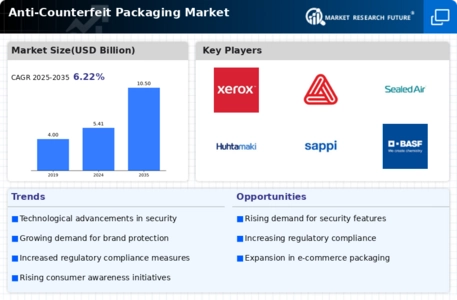
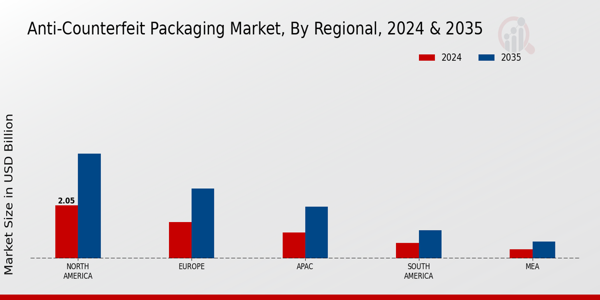
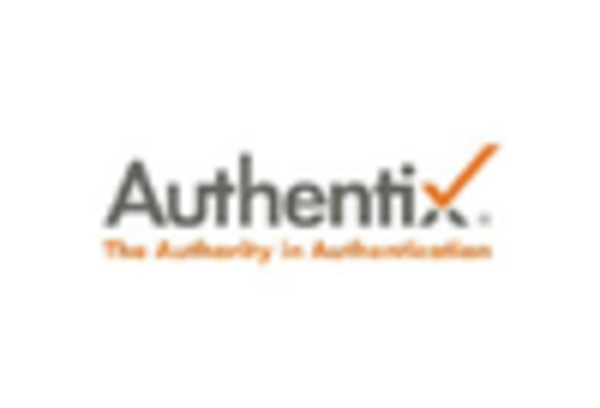
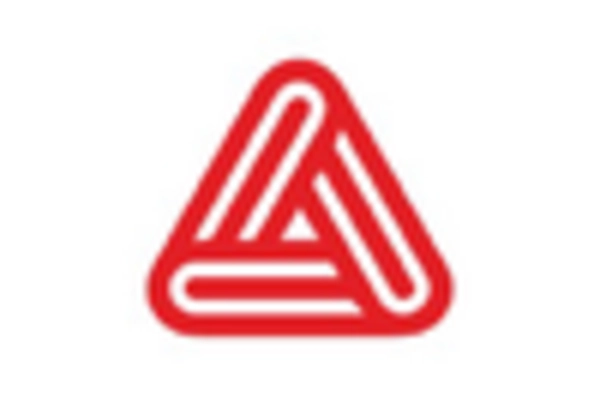
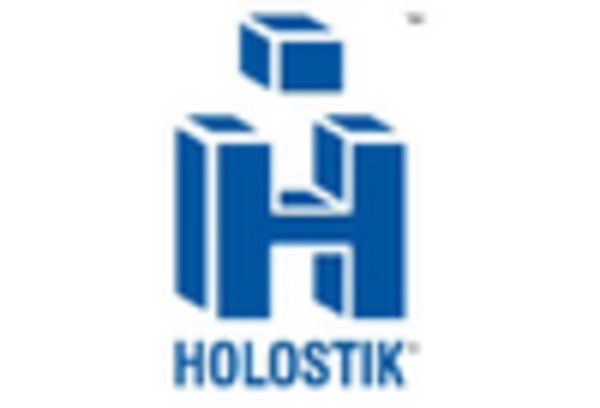
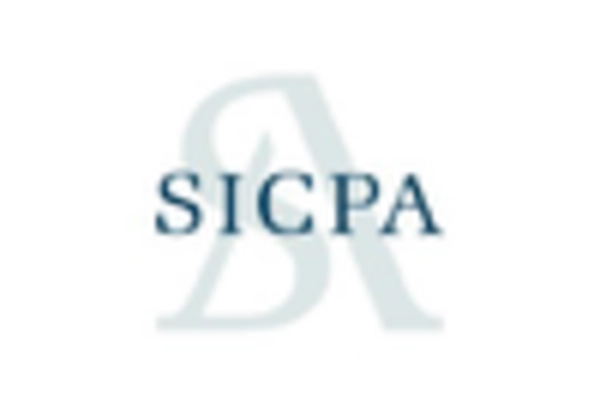
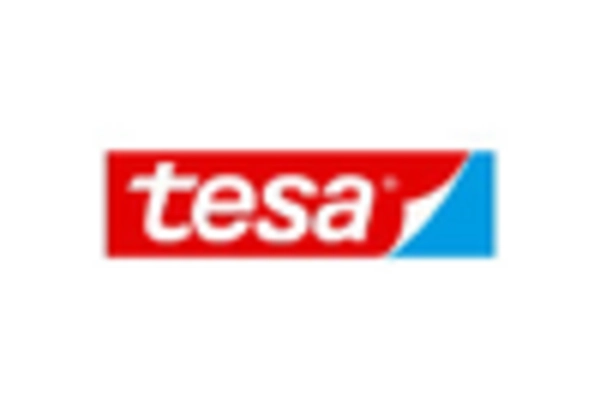
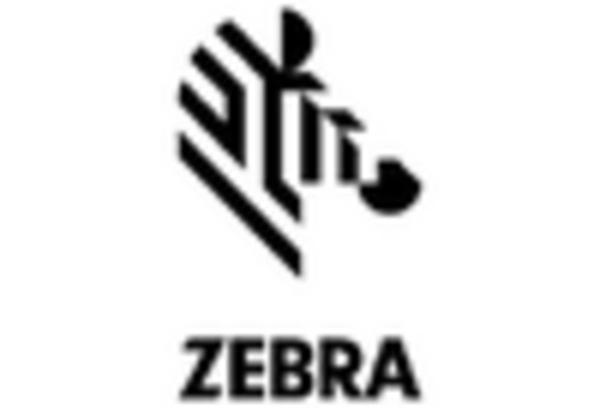

Leave a Comment